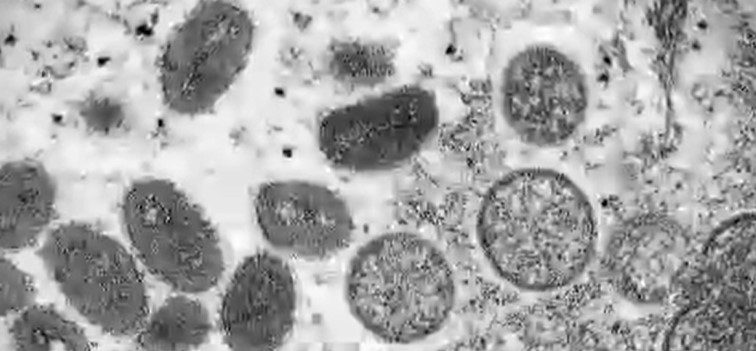The U.S. Food and Drug Administration issued an Emergency Use Authorization to allow the JYNNEOS vaccine to be given between layers of the skin for people 18 years of age and older at high risk for monkeypox infection.
The recent EUA also allows the vaccine to be given beneath the skin (subcutaneously) for people younger than 18 years of age at high risk for monkeypox infection.
This change makes it possible for the number of monkeypox vaccine doses in the country to increase five-fold, as one vial of vaccine can now potentially yield five doses instead of just one dose. Based on the earlier federal allocation plan, LA County expected to receive 14,000 vials this week, which would have yielded an estimated 70,000 monkeypox vaccine doses for eligible LA County residents. However, the federal government clarified earlier this week that LA County will receive 5,600 vials (totaling 28,000 doses), not 14,000 vials. Public Health has received assurances from the federal leadership that additional doses will be available in the coming weeks.
With the arrival of 28,000 doses later today, LA County will open up eligibility to about 8,000 individuals eligible for their second doses. Residents who received their first dose more than 28 days ago can receive their second dose the following ways:
-Residents who received their first dose through their healthcare provider over 28 days ago should contact their provider to schedule an appointment.
-Residents who registered through the Public Health registration system and were vaccinated at a Public Health location will receive a second text message when their second dose is due with instructions on where to receive their second dose.
There will be an additional 19,000 doses distributed to community providers and public vaccine sites providing first doses to those eligible; 1,000 doses are reserved for close contacts, outbreak response, and special populations.
Eligible residents needing their first dose can now register by visiting the website.
All first and second doses will be administered intradermally, unless contraindicated. The FDA has advised that those under 18 years of age and adults who have a history of developing keloid scars should get the vaccine beneath the skin (subcutaneously), not between the layers of the skin (intradermally).
Those without access to the internet or needing help with registration, can call the Public Health Call Center at for more information on monkeypox, including general information, testing, treatment, and vaccines at (833)540-0473. The Public Health Call Center is open 7 days a week 8 a.m. – 8:30 p.m.
The California Department of Public Health provided a weekly update on the state’s monkeypox outbreak and response.
Cases
California has reported 2,356 probable and confirmed monkeypox cases.
Cases have been reported in 33 local health jurisdictions.
Complete case data is available on the state’s monkeypox data dashboard.
Hospitalizations
There have been 57 hospitalizations in California due to the monkeypox virus and no reported deaths.
Vaccines
To date, California has received 109,471 vials of monkeypox vaccine, including 43,282 delivered directly to Los Angeles County from the federal government.
CDPH has distributed 65,130 vials to other local public health departments.
Complete allocation and distribution data is available on the monkeypox vaccine page.
Treatment
To date, the state has distributed 2,841 oral treatment courses and 331 IV treatment doses of Tecovirimat (TPOXX).
Know the Signs
People with monkeypox may first develop flu-like illness with fever, headache, muscle aches, exhaustion, and enlarged lymph nodes. A characteristic rash, which can appear like blisters or pimples in certain parts of the body, may occur a few days later. These blisters or pimples may be very painful. Monkeypox may require hospitalization in rare instances. In some cases, no flu-like symptoms appear, and individuals only develop a rash. People with the virus may experience all or only a few of these symptoms. The illness may last for up to 2 to 4 weeks and usually resolves without specific treatment.
Slow & Prevent Spread
There are several measures that can be taken to prevent infection with monkeypox virus:
Avoid any physical contact like hugging, kissing, or sexual intimacy with people who have symptoms of monkeypox, including a rash or sores.
Talk to sexual partner/s about any recent illness. Be aware of new or unexplained sores or rashes on your body or a partner’s body, including on the genitals and anus.
Do not share eating utensils or cups with a person with monkeypox.
Do not handle or touch bedding, towels, clothing, or other fabrics that have been in contact with someone with monkeypox.
Wash hands often with soap and water or use an alcohol-based hand sanitizer.
Read the CDC’s latest information on safer sex, social gatherings and monkeypox.
If you have symptoms:
Reach out to a health care provider to get checked out. If you don’t have a provider or health insurance, visit a public health clinic near you.
Take a break from sexual and intimate contact as well as attending public gatherings.
Isolate from others you live with.
Wear a mask and cover rashes if needing to be around others and when visiting a health care provider.
Health care providers should use standard and recommended isolation precautions when caring for patients with suspected or confirmed monkeypox infection.
Like this:
Like Loading...
Related





 Tweet This
Tweet This Facebook
Facebook Digg This
Digg This Bookmark
Bookmark Stumble
Stumble RSS
RSS


























REAL NAMES ONLY: All posters must use their real individual or business name. This applies equally to Twitter account holders who use a nickname.
0 Comments
You can be the first one to leave a comment.